On a warm day last June, visitors flocked to the Albert and Shirley Small Special Collections Library for a “Family Day” event in celebration of the library’s blockbuster exhibition, “Visions of Progress: Portraits of Dignity, Style, and Racial Uplift,” curated by UVA Associate Professor of History John Edwin Mason. Since its installation in September 2022, the exhibition, which showcased portraits that African Americans in Central Virginia commissioned from the Holsinger Studio in the early 20th century, had drawn national media attention and attracted more than 10,000 visitors, nearly double the average amount. On this day in June 2023, families came to say goodbye to the exhibition just before it closed, and to have their own portraits taken as well.
Inside the Main Gallery of the Harrison Institute and Small Special Collections Library, modern-day Charlottesville residents found Holsinger portraits of their ancestors. Outside, families posed among the lush greenery for tintype portraits taken by Richmond photographer Em White, who was hired by Special Collections for the event. Nearby, visitors climbed inside the Free Book Bus to peruse titles, while on the first floor of the Harrison/Small building, children and teens participated in a “Zine Jam” workshop, cutting and pasting images to create their own tiny magazines.
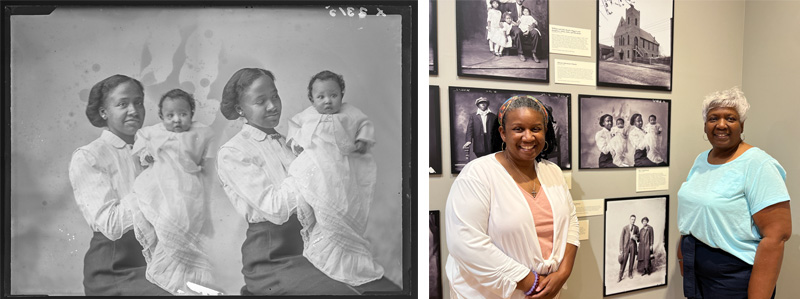
“We had always wanted to do an event like Family Day for the local community,” said Holly Robertson, Curator of University Library Exhibitions, who organized the event and co-curated the Holsinger exhibition. “But it’s one thing to want to do an event, it's another thing to actually pull it off. ‘Visions of Progress’ had such good momentum, from the opening night to the media high of being featured on PBS News Hour in the dead of winter, and it really kept people coming to the exhibition, interested in the exhibition, writing in to say, ‘Hey, my relative is in here!’ It was an incredible, constant wave of positivity that propelled us to do a ‘last hurrah’ of sorts with Family Day.”
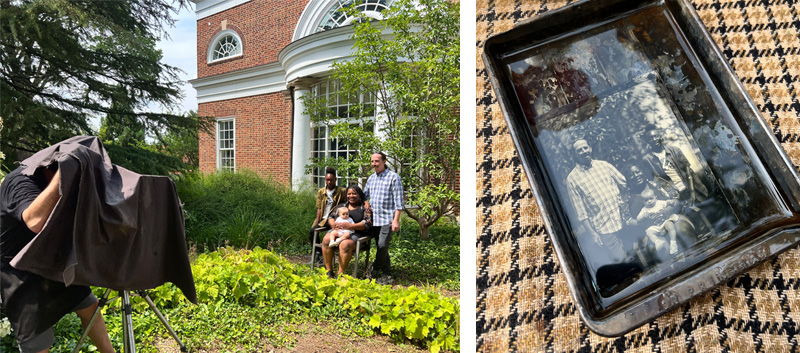
The success of “Visions of Progress” also inspired the curatorial team to continue examining Black life in the United States 100 years ago. “In thinking about other things that we wanted to highlight, both from a curatorial interest from staff and faculty, as well as a timely interest … we realized the Harlem Renaissance was what we wanted to do next,” Robertson said. As “Visions of Progress” wound down, Robertson worked with Special Collections curators Krystal Appiah and George Riser to dive into the Library’s rich collection of Harlem Renaissance artifacts, including books, magazines, illustrations, and manuscripts of the writers, artists, and thinkers of that era.
Looking back at the Harlem Renaissance
In September, 2023, UVA Library launched its latest major exhibition, “Their World As Big As They Made It: Looking Back at the Harlem Renaissance” in the Main Gallery of the Special Collections Library with an opening-night reception that featured live music from the Charlottesville Jazz Congregation. The curators had interpreted the cultural zeitgeist correctly; attendance for the event was at capacity, and just before the opening, the Metropolitan Museum of Art announced plans for its own Harlem Renaissance exhibition (launching later this month).
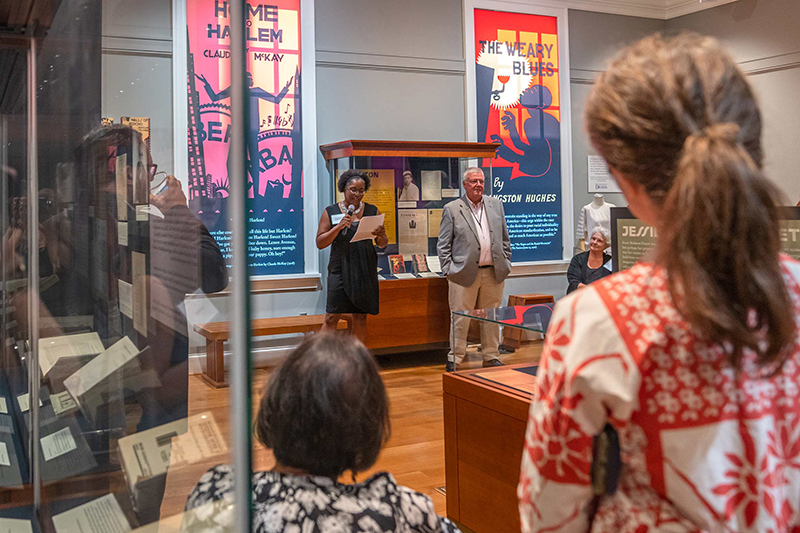
The exhibition’s title is inspired by the Georgia Douglas Johnson poem, “Your World,” in which she looks back at the creativity of the Harlem Renaissance, acknowledges the hardships of being an emerging artist, and beckons a new generation of Black artists, writers, poets, and publishers with the line: “Your world is as big as you make it.” Johnson published her first poems in 1916 in the National Association for the Advancement of Colored People’s magazine The Crisis, which is featured prominently in the exhibition.
“Our original idea for the exhibition was to take the three major magazines from Harlem from the period: Opportunity, The Messenger, and The Crisis, which all had different approaches to what they called ‘Negro uplift’ during the Great Migration, amid a background of incredible violence that was being perpetrated at that time,” said Riser, one of the exhibition’s curators. The works in the exhibition show “the countering of that violence, through this renaissance of art and poetry and music,” he said.
In addition to the original editions of those magazines, the exhibition features the papers of Langston Hughes; first editions of books by Claude McKay, Zora Neale Hurston, and Countee Cullen; as well as fashions and music from the era, thanks to contributions from Sophie Abramowitz, a specialist at Smithsonian Folkways Recordings (and former student assistant for Special Collections) whose graduate dissertation focused on songwriting in the Harlem Renaissance. Marlon Ross, a UVA English professor, also assisted with curation. Many of the items in the exhibition were originally collected by UVA Library soon after they were published. “Not many institutions have a [Harlem Renaissance] collection like ours,” curator Krystal Appiah told UVA Today. [See below for the curators’ favorite elements of the exhibition.]
Inspired by the way “Visions of Progress” drew in the local community through ancestral connections, Library curators put out a call this past summer for present-day artists to create works that would explore or respond to poems by Harlem Renaissance authors. The project, titled “As Big as We Make It!” was sponsored by a grant from the UVA Arts Council. A selection committee chose five contemporary artists with connections to UVA and Charlottesville to showcase their work in the exhibition. Read more about them here.
Curators provided tours of “Their World As Big As They Made It” to more than 600 middle school students on field trips just in the first three months of the exhibition run — and they will welcome almost 1,000 more Charlottesville-area high school students before the end of this month. In late January, more than 1,000 people registered to attend a virtual behind-the-scenes tour of the exhibition through UVA Lifetime Learning. On April 26, the Library will hold an open-house Final Friday celebration of the Harlem Renaissance. And for those traveling to Charlottesville for the 2024 Black Alumni Weekend or either Reunions weekends, the Library will offer in-person curator-led tours of the exhibition.
Sneak Peak: Curators share their favorite elements of “Their World As Big As They Made It: Looking Back at the Harlem Renaissance”
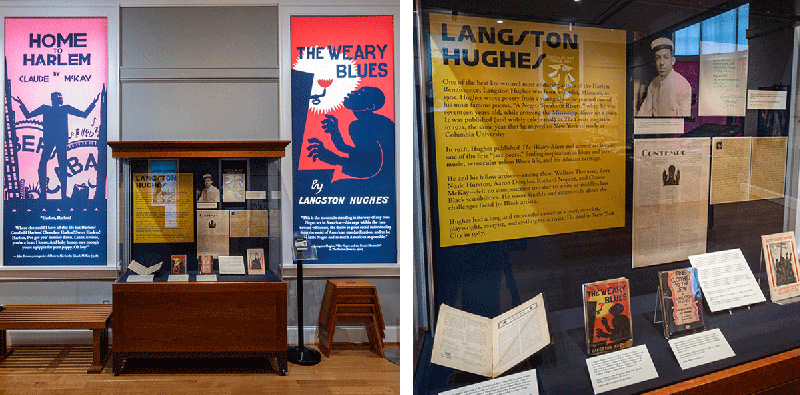
— Krystal Appiah, Head of Collection Development at the Small Special Collections Library
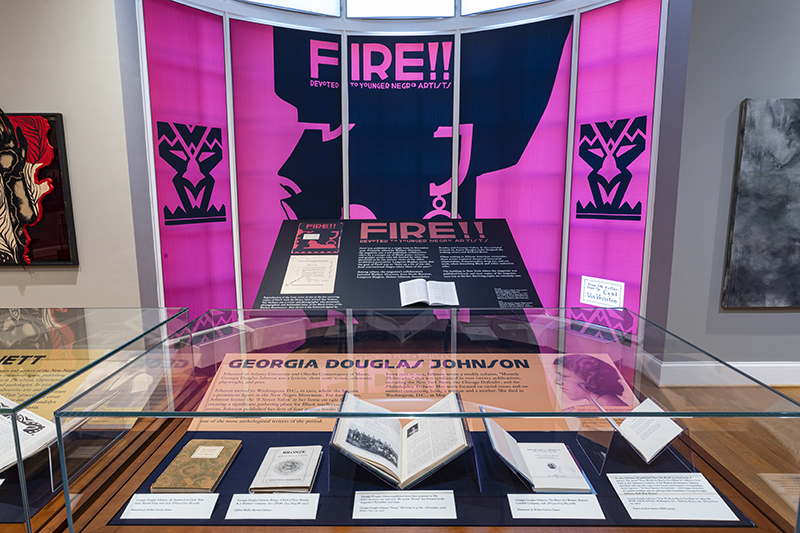
— George Riser, Instruction and Curation at the Small Special Collections Library
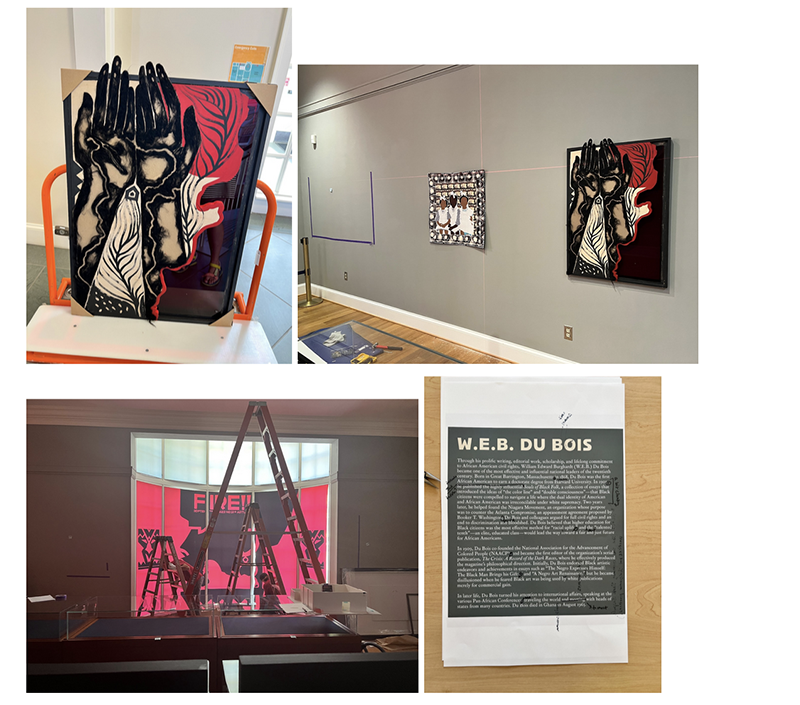
— Holly Robertson, Curator of Exhibitions for the Small Special Collections Library
Looking ahead: The world of Anne Spencer
As Robertson was working on building on the Harlem Renaissance exhibition, she realized the Library had an opportunity to continue to examine Black life a century ago through the lens of poet Anne Spencer, a Virginia native who was an active figure in the Harlem Renaissance. UVA Library holds a vast collection of Spencer’s work and papers and this will be the subject of the next major exhibition opening in the Main Gallery of the Special Collections Library in September 2024. “I see ‘Visions of Progress,’ the Harlem Renaissance, and Anne Spencer as a triptych of exhibitions that look back at the African American experience 100 years ago, with a focus on Charlottesville and Central Virginia,” Robertson said.
Spencer lived most of her life in Lynchburg, Virginia, but had a strong presence in the literary world of the Harlem Renaissance. Her first published poem appeared in The Crisis and subsequent work was published in “The New Negro: An Interpretation,” a 1925 anthology of fiction, essays, and poetry edited by Alain Locke that served as a central text of the Harlem Renaissance, pushing for social and political change. In addition to being a poet, Spencer was a teacher, librarian, mother, gardener, and activist who helped revitalize the Lynchburg chapter of the NAACP, and her Lynchburg home was a meeting place for writers and intellectuals including Thurgood Marshall, Langston Hughes, and W. E. B. DuBois.
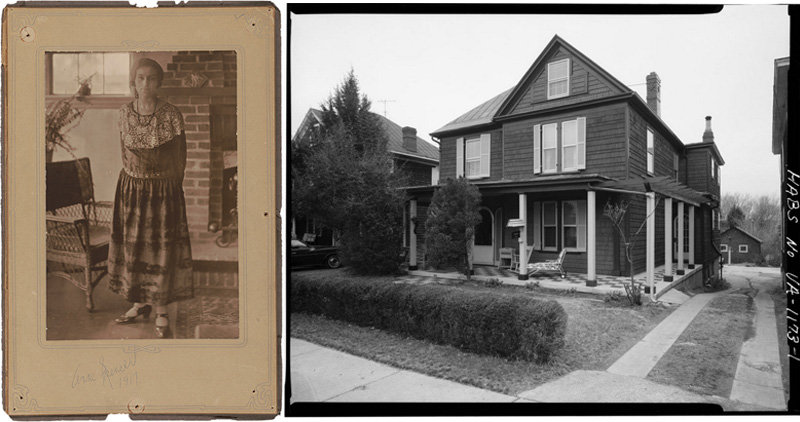
Spencer’s house is now a museum, maintained and run in part by her granddaughter, Shaun Spencer-Hester. “I just traveled to the museum recently and it is so beautiful,” Robertson said. “It is a liberated woman’s space, complete with a writer’s studio and gorgeous garden. The museum is starting to get its own national attention and funding. It feels like the right time to recognize the Library’s Spencer collection, which scholars are publishing on these days — and to lift up and celebrate the work of Shaun Spencer Hester as well.”
Robertson hopes to build the exhibition space to allude to architectural elements of the Spencer house and garden. “I keep thinking about family trees and the beautiful garden that [Spencer] left,” she said. “I plan to situate exhibition cases like trees, like the arbors that you see in the garden, giving people a sense of the beauty that they can behold and the story that they can behold about this incredible civil rights activist, librarian, and poet who brought the Harlem Renaissance into her own home.”
To see our latest major exhibition, “Their World As Big As They Made It: Looking Back at the Harlem Renaissance,” in person, visit the Main Gallery of the Special Collections Library, open weekdays and Saturday afternoons. Or attend our Final Friday event on April 26, 2024, for an open house-style celebration featuring gallery talks by exhibition curators.
